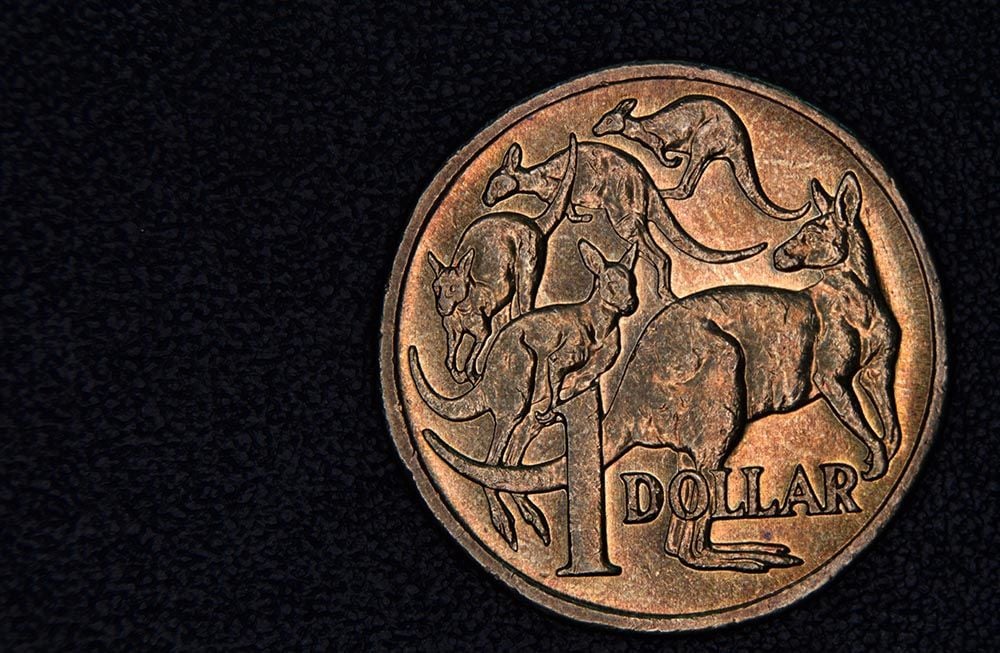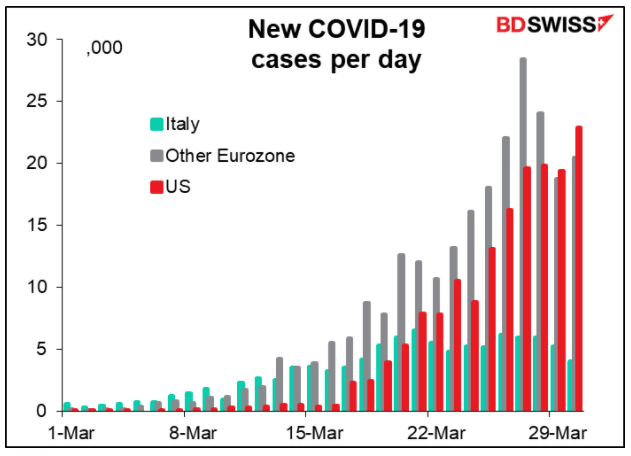Australian Dollar Forecast: "We see risk of the both the AUD and the NZD dropping again"
- AUD decline not yet done says Rabobank
- AUD sees firm start to new week as markets rally
- RBA decision dominates domestic calendar

Image © Adobe Images
- GBP/AUD spot at time of writing: 2.0321
- Bank transfer rates (indicative): 1.9610-1.9750
- FX specialist rates (indicative): 2.00-2.0140 >> More information
The Australian Dollar is seen gaining in value at the start of the new week with advances coming amidst an ongoing improvement in global stock markets, but analysts at a leading European investment bank remain bearish on the currency's outlook noting the current improvement in sentiment is potentially unlikely to last.
The Australian Dollar remains highly attuned to shifts in investor sentiment, tending to rally alongside improving confidence and fall in times of increased market risk, of which there has been plenty since late February.
Global markets appear to be trading higher on Monday April 06 after statistics show the number of reported cases of coronavirus and related deaths continues to rise, but at a slower pace. Markets tend to be forward looking in nature and the signal from the global investor community is therefore that a turnaround in the crisis is in the offing.
The Pound-to-Australian Dollar exchange rate is currently quoted at 2.0332, down 0.66% on the day's opening. The Australian-U.S. Dollar exchange rate is meanwhile quoted at percent higher at 0.6050.
Despite the recent uplift in the Aussie Dollar's value, the house view at Rabobank - the Dutch-based multi-national lender and investment bank - is that the current period of stabilisation in global markets is likely to be short-lived, which could place added downside pressures on global stock markets and the Aussie Dollar.
"Relative to their G10 peers the AUD and the NZD have been hard-hit by the events of recent weeks and the rise in risk aversion. While any bear market will be characterised by periods of consolidation and modest pullbacks, we see risk of the both the AUD and the NZD dropping again vs. the USD on a 3 month view," says Jane Foley, Senior FX Strategist at Rabobank.
Rabobank expect key international economic data releases will worsen during the current quarter, creating a risk aversion amongst investors that could weigh on the Australian Dollar in particular.
Last week we got a flavour of the scale of the economic impact of the coronavirus crisis with labour market statistics from the U.S. showing 10 million Americans have applied for unemployment benefits in the past two weeks alone while official non-farm payroll numbers showed unemployment jumped 700K, suggesting there was an unexpected surge in unemployment even before the strict lockdowns were enforced and bodes ill for coming weeks.
The scale of the upsurge in unemployment is unprecedented and creates an air of uncertainty that would suggest further deteriorations in sentiment over coming days and weeks.
"We anticipate that the USD will remain well bid through the duration of this crisis and see risk of further sharp moves lower in AUD/USD," says Foley. Such pressures on AUD/USD should translate into other crosses, including GBP/AUD and EUR/AUD.
Australia's economy is forecast by most economists to suffer a sharp downturn this year, which should mean interest rates at the Reserve Bank of Australia (RBA) remain at record lows for some time yet. Recessionary conditions should also prompt the government of Australia to expand the fiscal support it offers the economy, which should in turn lead to a deterioration in the country's finances.
Neither RBA or government policy are therefore supportive of the Australian Dollar, but looking ahead a strong recovery relative to other nations could ultimately prove supportive to the under-pressure currency.
How quickly Australia recovers from the current coronacrisis could well depend on the performance of China's economy, owing to the tight trading links between the two countries. Recall, Australia avoided recession following the 2008 crisis because China continued to boom and spend on infrastructure, which in turn meant heightened demand for Australian exports such as iron, coal and natural gas.
"A key factor in how fast both New Zealand and Australia bounce back after the current crisis is likely to be the pace of growth in China and related demand for Australian and New Zealand exports. While iron ore and coal dominate Australian exports to China, dairy, meat and logs are New Zealand’s key exports to China," says Foley.
We saw the Aussie Dollar find some strength last week on data showing the Chinese economy put in a faster-than-expected recovery in March, which would be a supportive trend if extended.
RBA Ahead
Looking ahead to the remainder of this week, the RBA is due to update their policy profile on Tuesday, they are expected to keep policy on hold at its first meeting since it cut interest rates to 0.25% and announced quantitative easing on March 19.
The RBA convened a special meeting to consider options for monetary policy responses to the economic effects of the coronavirus crisis and said it was unlikely interest rates would be raised "for an extended period", but that there was no appetite for negative interest rates in Australia.
The yield on Australia's 3-year government bonds would meanwhile be kept at 0.25%, which would be achieved by purchasing these bonds on the secondary market. By buoying demand, the yield on debt is kept low, which is seen as supportive of the economy.
However, this tends to negate any incentive for foreign investors to buy Australian debt, which has in the past been a central pillar to Australian Dollar valuations.
"AUD/USD will continue to trend lower in coming weeks because the global economy is in recession. We expect moves in AUD this week to be dominated by offshore, rather than domestic, developments," says Kim Mundy, a foreign exchange strategist at Commonwealth Ban of Australia.





